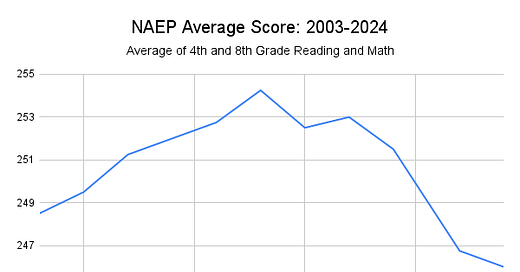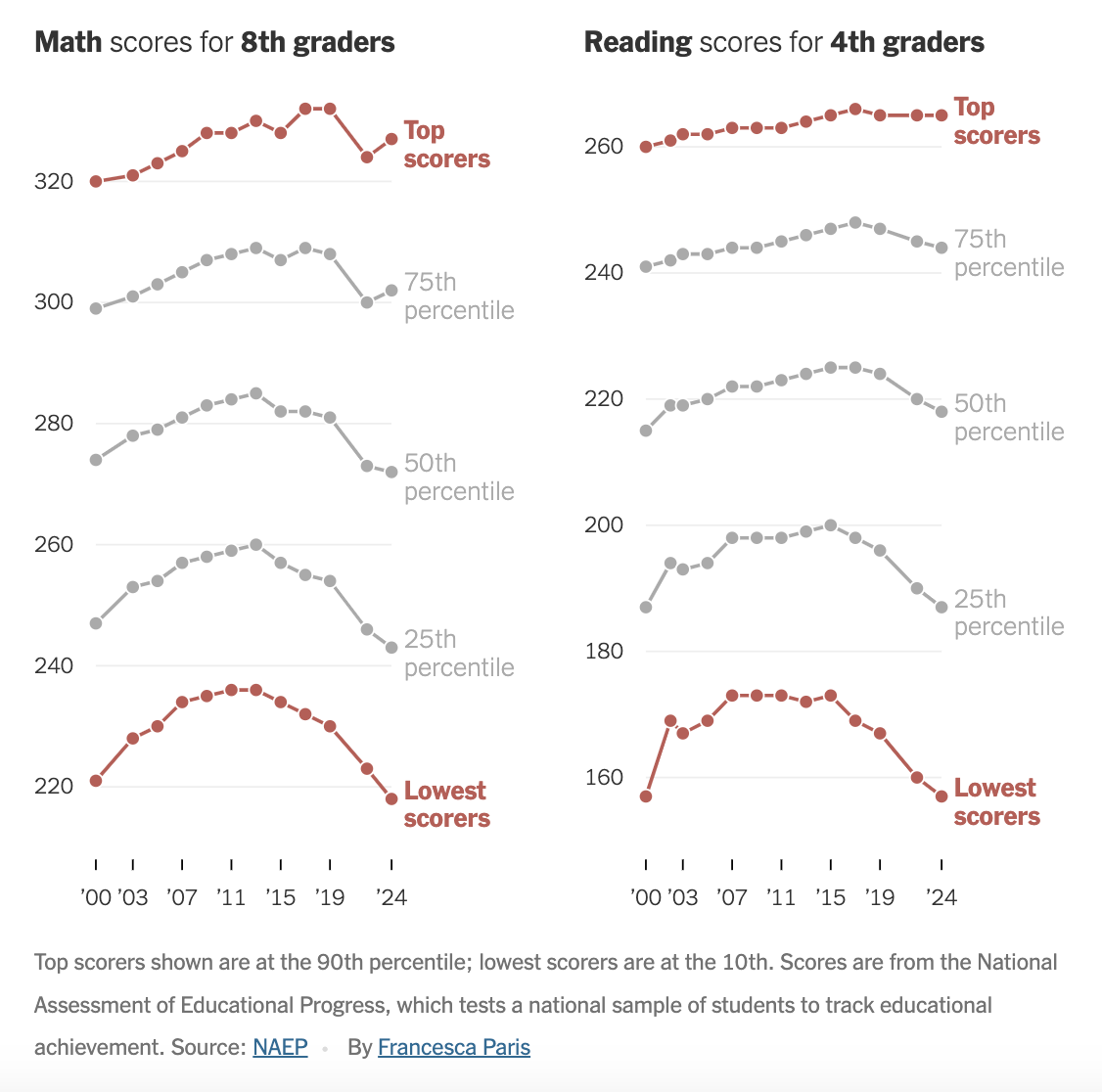Why did NAEP scores decline during Great Awokening?
When progressive ideas triumph, why do lower classes' test scores crater?
Overall test scores on the federal National Assessment of Educational Progress rose from 2003 through 2013, then drifted down through 2019, dropped sharply during covid school closures, then continued to decline from 2022 to 2024.
On the other hand, these are not huge changes, just a small fraction of a standard deviation. (By the way, I look at NAEP scores by averaging four tests: math and reading scores for 4th graders and 8th graders.)
As I’ve mentioned before, most of the decline during covid was among the bottom half of test-takers. White collar kids do okay going to school on Zoom, but blue collar kids benefit from going to school in person and being talked at by middle class grown-ups.
Still, their decline began back around 2015. From the New York Times news section:
The Pandemic Is Not the Only Reason U.S. Students Are Losing Ground
For years, the country’s lowest-scoring students were steadily improving on national tests. Starting around 2013, something changed.
By Sarah Mervosh
April 7, 2025
There was once a time when America’s lowest-performing students were improving just as much as the country’s top students.
Despite their low scores, these students at the bottom made slow but steady gains on national tests for much of the 2000s. It was one sign that the U.S. education system was working, perhaps not spectacularly, but at least enough to help struggling students keep pace with the gains of the most privileged and successful.
Today, the country’s lowest-scoring students are in free fall.
Top scorers shown are at the 90th percentile; lowest scorers are at the 10th. Scores are from the National Assessment of Educational Progress, which tests a national sample of students to track educational achievement. Source: NAEP By Francesca Paris
The reason is not just the pandemic. For at least a decade, starting around 2013, students in the bottom quartile have been losing ground on the National Assessment of Educational Progress, a key exam that tests a national sample of fourth and eighth grade students in math and reading.
…The bottom quartile is made up of students from various backgrounds, but it includes a higher proportion of students with disabilities, students learning English and children from poor families. Since the pandemic, their scores have often continued to fall, even as high achieving students stabilize. …
Researchers point to a number of educational and societal changes over the past decade, including a retrenchment in school accountability, the lasting effects of the Great Recession and the rise of smartphones, which has coincided with worsening cognitive abilities even among adults since the early 2010s. …
One possible explanation is the end of No Child Left Behind, the contentious school accountability law President George W. Bush signed in 2002.
The law is perhaps best known for its legacy of standardized testing, including annual exams in math and reading in third through eighth grade.
To me, it’s best known for insisting that by 2014, all public school students in the country would score at least Proficient on a scale of:
Advanced
Proficient
Basic
Below Basic
Lake Wobegon mandated by law!
But, at least it was a different era than the succeeding Great Awokening.
Paywall below.
Keep reading with a 7-day free trial
Subscribe to Steve Sailer to keep reading this post and get 7 days of free access to the full post archives.





